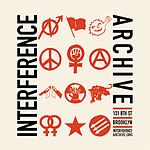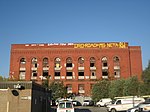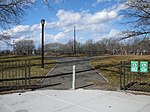Smith–Ninth Streets station
1933 establishments in New York CityGowanus, BrooklynIND Culver Line stationsNew York City Subway stations in BrooklynNew York City Subway stations located aboveground ... and 3 more
Railway stations in the United States opened in 1933Red Hook, BrooklynUse mdy dates from April 2018

The Smith–Ninth Streets station is a local station on the IND Culver Line of the New York City Subway. It is located over the Gowanus Canal near the intersection of Smith and Ninth Streets in Gowanus, Brooklyn, and is served by the F and G trains at all times. The station is 87.5 feet (26.7 m) above ground level, making it the highest rapid transit station in the world.This elevated station, opened on October 7, 1933, has four tracks and two side platforms. In 2009, the Metropolitan Transportation Authority began an extensive renovation of the station. It was closed entirely for a full reconstruction between June 2011 and April 2013.
Excerpt from the Wikipedia article Smith–Ninth Streets station (License: CC BY-SA 3.0, Authors, Images).Smith–Ninth Streets station
9th Street, New York Brooklyn
Geographical coordinates (GPS) Address Nearby Places Show on map
Geographical coordinates (GPS)
| Latitude | Longitude |
|---|---|
| N 40.674444444444 ° | E -73.997222222222 ° |
Address
Smith–9th Streets
9th Street
11231 New York, Brooklyn
New York, United States
Open on Google Maps






